Igor Tkachenko
Institute of Computer Science and Technology
Faculty of Intelligent Systems and Programming
Department of Software Engineering
named after L. P.
Feldman
Improving the efficiency of creating spherical panoramas from photographs to generate a virtual environment in VR systems
Scientific adviser: Head of the Department, Doctor of Technical Sciences, Professor Sergey Zori
Abstract
- Goals and objectives of the study, planned results
- Research and development overview
- Analysis of ways to create spherical panoramas
- The role of a cube map in creating a spherical panorama
Introduction
The modern photo creation toolkit provides great variability and diversity for the implementation of the most creative ideas by the user. A person has access to a wide variety of settings on most devices. One of the unusual and interesting ways to share the world around you is to create panoramic photography. Such images can be obtained in different ways: using various devices in combination with the appropriate software.
One of the types of panoramas is a spherical panorama. The main distinguishing feature of this type of panoramas is the completeness of the picture around the device for capturing a spherical panorama. Thus, the user can look at any point beyond the viewing angle of the human eye, both horizontally and vertically.
One of the advantages of viewing interactive panoramas over regular photographs is the immersive experience.
There are many possibilities for using spherical panoramas. These include the creation on their basis of virtual tours to beautiful places and sights of different countries, museums. A good advertising ploy can be the use of 3D panoramas to attract even more attention to cafes, restaurants, hotels. Viewing such panoramas, visitors have the opportunity to virtually visit these places.
Another type of commercial activity where you can use the possibilities of spherical panoramas is the sphere of commercial and private real estate. Real estate agencies can present their offers in a more favorable light in advertisements for the sale or rent of real estate. Spherical panoramas of real estate objects will be another argument in favor of the client's choice [1].
Goals and objectives of the study, planned results
The aim of the study is to determine the most optimal way to create a spherical panorama. Consideration should be given to both the equipment with which the shooting will be carried out and the capabilities of the user, who, most likely, has no experience in such operations.
The planned result is an application for smartphones controlled by the Android operating system. This option is the most optimal, since the majority of users own such a device. In the future, the audience of users can be expanded by developing this application for smartphones with the iOS operating system.
Research and development overview
Unfortunately, there is little information on the generation of a virtual environment and the creation of spherical panoramas, in particular, in the public domain, but some research and development can be singled out that will greatly help in achieving this goal.
Review of international sources
The main source and precedent for the successful implementation of this task is the work of a programmer from the city of Norwich, Paul Reed [2]. He mathematically and programmatically described the transformation of a cube map into a spherical panorama [3]. The spherical panorama itself cannot be captured directly with a smartphone camera, however, a cube map consists of 6 ordinary photographs that can be taken with a conventional camera. Although some transformation is required to produce a good cube map, these problems will be addressed as the master's work progresses.
Also, I studied the article Spherical panorama compositing through depth estimation
by Miguel
Saura-Herreros, Angeles Lopes and Jose Ribelles [4]. It describes working in
2.5D space and processing a spherical panorama using image depth measurement.
Review of national sources
As an introduction to the field of virtual tours, the article Technology for creating virtual
interactive tours Rubius 3DTourKit
by M. Zaytseva, A. Lysak and S. Dorofeeva
[5] was considered. It examines the main types of 3D panoramas, identifies
the problems of their creation and describes the capabilities of the Rubius 3DTourKit Studio
software system for creating virtual tours based on 3D panoramas.
To complete the picture on the theory of creating spherical panoramas, material from the site fototips.ru will be used. [6]. The process of creating a spherical panorama and its features are fully and accessible here.
Review of local sources
Within the framework of the III International Scientific and Practical Conference PIIVS-2020, I investigated methods for creating spherical panoramas for virtual reality systems. The article defines the use of a spherical panorama in virtual reality systems [7]. Methods of its creation are considered. The best ways of obtaining an image are analyzed, and the main directions for further research are indicated.
Analysis of ways to create spherical panoramas
Spherical panorama (virtual panorama, 3D panorama) is one of the types of panoramic photography. It is based on an image collected from many separate frames in a spherical (equirectangular, sphere) or cubic projection. A characteristic feature of spherical panoramas is the maximum possible viewing angle of space (360×180 degrees).
To improve the user experience, spherical panoramas can be used in VR systems. These systems include modern virtual reality equipment: helmets, special cases for smartphones, etc. This equipment allows you to immerse yourself in virtual reality at a fairly high level.
The most striking use of spherical panoramas in virtual reality is the creation of virtual tours. A virtual tour is a way of realistically displaying three-dimensional multi-element space on the screen. The elements of a virtual tour, as a rule, are spherical panoramas connected by interactive links-transitions (hotspots). In other words, a virtual tour is a general designation for several spherical panoramas, connected with each other by means of transition points, along which you can virtually "move" during the viewing process. Virtual tours, as a rule, include other interactive elements: pop-up information windows, explanatory inscriptions, graphically designed control keys, etc. There is certain software to create virtual tours. It includes:
- Biganto Visual;
- Krpano;
- Kolor Panotour Pro;
- Pano2VR.
Another entertaining way of using spherical panoramas in virtual reality is various games. Just like
in virtual tours, you can interact with spherical panoramas within the system. In addition to the
usual movement between scenes, some kind of interactivity can be implemented in games. For example,
when looking at the required point for a certain amount of time, the gameplay will progress. These
games are in the hidden object
genre. The photo contains objects that the player needs to
find.
Nowadays, a spherical panorama can be created with almost any device containing a camera. Two categories of such devices can be distinguished: some are specially designed to create spherical panoramas and this is their direct purpose, others are auxiliary in the process of creation.
Let's consider the first type of devices. One of the most recognized devices among the creators of
spherical panoramic photos is the Theta series cameras from Ricoh. A pair of 20-megapixel sensors
allows you to get the final image at a resolution of 6720×3360 pixels, which gives 23 effective
megapixels. In JPEG, this is a ready-made equidistant projection, in RAW - two characteristic
fish-eye
images in one industrial standard DNG file.
Theta cameras are mostly controlled remotely. The camera connects to smartphones either via Wi-Fi (via its own access point or router), or via Bluetooth. The application is universal and fits all Ricoh cameras.
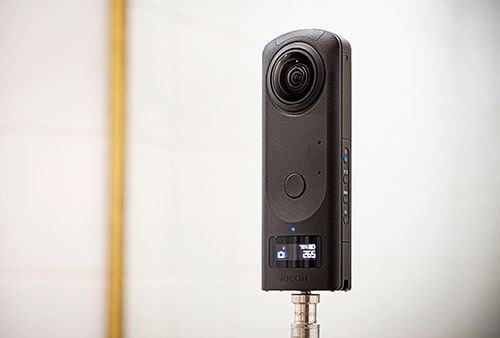
Figure 1 – Ricoh Theta Z1 mounted on a tripod
In addition to the fully automatic shooting mode, there are three priorities - aperture, shutter speed and ISO sensitivity. To fix both aperture and sensitivity (the most common commercial shooting scenario), you can switch to manual mode [8].
The next device is not equipped with a camera, but it is a "container" for several conventional GoPro cameras – Freedom 360. This is a dedicated tripod for 6 cameras. Each of them records a photo or video, which then forms a spherical result using specific software.
Ancillary devices include all other devices that have the ability to capture images. However, when shooting on his own, the user must clearly know what frames need to be prepared for subsequent stitching. At the same time, additional software is also required for the implementation of photo stitching.
Such devices include smartphones and cameras in any form. We should also highlight the lenses of
fisheye cameras. Fisheye (Fisheye
, transcription from English fish-eye) is a kind of
ultra-wide-angle lenses with uncorrected distortion, lenses. Fisheye differs from conventional
(orthoscopic) short-throw lenses by
pronounced uncorrected barrel distortion and distorted display of straight lines in the form of
arched curves. The field of view of such lenses can reach or exceed 180°, while orthoscopic optics
of the same focal lengths provide a much narrower field of view. This is achieved through a specific
way of displaying space, similar to cartographic azimuth projections.
[9]. These lenses greatly simplify the process of creating a spherical
panorama: their field of view is much wider than standard lenses, so the result requires fewer
photos.
The role of a cube map in creating a spherical panorama
Cubic texture, cube map – a technique in three-dimensional computer graphics, designed primarily for modeling reflections on the surface of an object [10]. The main distinguishing features of a cube map are:
- the presence of only 6 images in accordance with the number of cube faces;
- the width and height of each image are equal;
- the meaning of the image is not lost between any adjacent faces of the cube – the composition should remain as it was intended.
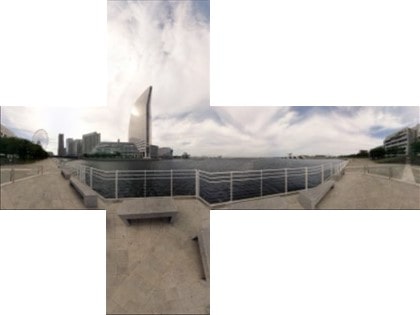
Figure 2 – A cube map of one view in Yokohama [11]
Based on the above features, another requirement is formed for creating a cube map – the camera's viewing angle must be 90°. Thus, ideally, 6 images need to be taken to obtain the required set of images.
Obviously, without transformations, the cube map will not give the effect of presence when viewed in
VR systems, since when the camera is placed inside the cube, the viewer will see its seams
– the ribs. Using mathematical transformations, you can get rid of them [3].
Actions with each cube map image are performed pixel by pixel, forming one image at the output. Since the length of the edge of the cube is known and the requirements for the viewing angles of the resulting photograph (360° horizontally and 180° vertically), you can determine the dimensions at the output – the width will be equal to the side of the face, and the length will be 2 times the side.
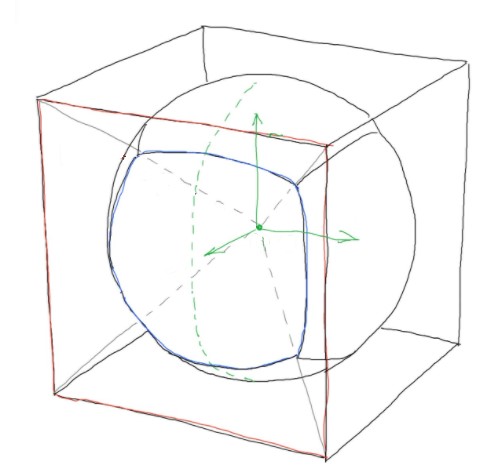
Figure 3 – Getting an equidistant projection from a cube map
Converting a cube map to a spherical panorama involves performing some mathematical operations. The material from the mathworld.wolfram.com [12] will be taken as a basis, which will be used when translating coordinates from the Cartesian system to the polar one and vice versa. These mathematical actions will be implemented in the developed application and will allow you to get the desired result.
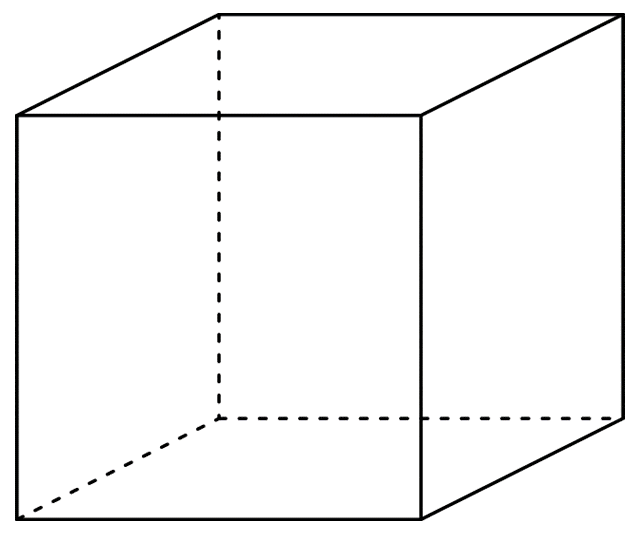
Figure 4 – Visual representation of the formation of a cube map (animation, 7 frames, 10 repetition cycles, 148 kilobytes)
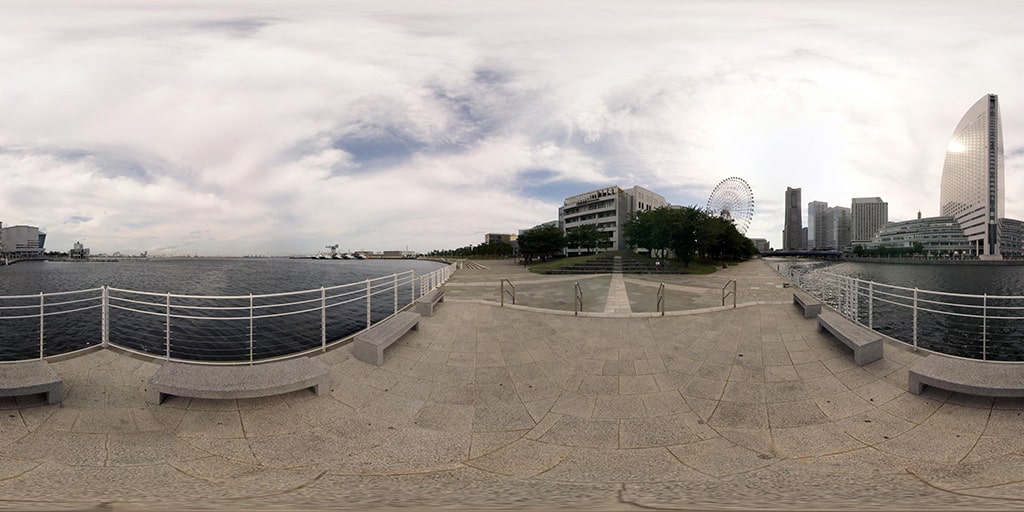
Figure 5 – Ready spherical panorama
Conclusion
The state of a person's virtual presence can be achieved through specific images - spherical panoramas, which can be created using available means, the methods of obtaining which can be improved and improved in the process of studying and taking into account the disadvantages of the presented algorithm.
There are several options for improving the process of creating a spherical panorama. Since the smartphone is the most popular and affordable tool, it is possible to develop your own application for this task. Thus, any user, regardless of the level of photography skills, will be able to create a spherical panorama in an affordable and high-quality manner and use it in virtual reality systems.
Research in the field of creating spherical panoramas will continue. They are aimed at identifying the optimization and modification of existing algorithms, taking into account the possibility of flexible adjustment of the process and the nature of spherical panoramas, as well as optimizing image transformations between rectangular and spherical systems. It is planned to create a prototype of a software system, taking into account the completed proposals for various platforms.
List of sources
- Что такое сферическая панорама? [Электронный ресурс] – Режим доступа: https://truevirtualtours.com/ru/arti... .
- Paul Reed Makes [Электронный ресурс] – Режим доступа: http://paul-reed.co.uk/index.htm.
- Calculating Equirectangular Projection [Электронный ресурс] – Режим доступа: http://paul-reed.co.uk/programming.html.
- Spherical panorama compositing through depth estimation [Электронный ресурс] – Режим доступа: https://link.springer.com/arti... .
- Зайцева М. А. Технология создания виртуальных интерактивных туров Rubius 3DTourKit / М. А. Зайцева, А. П. Лысак, С. Ю. Дорофеев // Известия Томского политехнического университета [Известия ТПУ]. — 2010. — Т. 317, № 5 : Управление, вычислительная техника и информатика. — [С. 97-102].
- 3D-панорамы. Часть I: Теория и фотосъемка [Электронный ресурс] – Режим доступа: https://fototips.ru/prakt... .
- Ткаченко И.С. Исследование методов создания сферических панорам для систем виртуальной реальности / И.С. Ткаченко, С.А. Зори // Программная инженерия: методы и технологии разработки информационно-вычислительных систем (ПИИВС–2020): сборник научных трудов III научно-практической конференции (студенческая секция) / Донец.национал.техн.ун-т; — Донецк, 2020. — С. 138-143.
- Обзор панорамной камеры Ricoh Theta Z1 [Электронный ресурс] – Режим доступа: https://itc.ua/arti... .
- Рыбий глаз (объектив) [Электронный ресурс] – Режим доступа: https://wikipedia.tel/Рыбий_глаз...
- Кубическая текстура [Электронный ресурс] – Режим доступа: https://ru.wikipedia.org/wiki/Кубическая_текстура .
- Humus – Cube textures [Электронный ресурс] – Режим доступа: http://www.humus.name/index... .
- Spherical Coordinates [Электронный ресурс] – Режим доступа: https://mathworld.wolfram.com/Spheri... .
